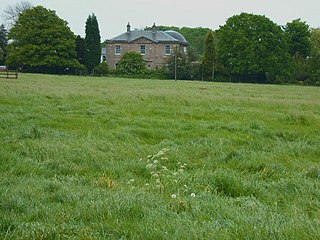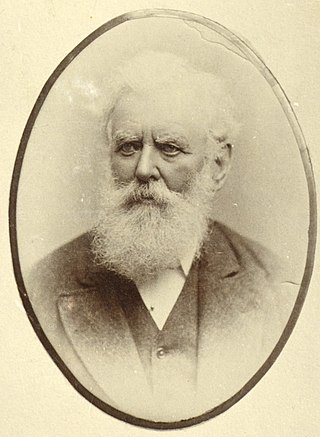
Whitmore is a village and small curacy in the county of Staffordshire, England, near Newcastle-under-Lyme.

Maer Hall is a large Grade II listed 17th-century country house in Maer, Staffordshire, set in a park which is listed Grade II in Historic England's Register of Parks and Gardens

Madeley Old Hall is a black and white Elizabethan house, now a small hotel, in the village of Madeley in Staffordshire, England. It stands in 2 acres of landscaped gardens and is a Grade II* listed building.
Baldwin's Gate is a village in the Borough of Newcastle-under-Lyme in Staffordshire. The population details for the 2011 census can be found under Whitmore. There is a pub in the centre of the village called The Sheet Anchor, along with a Post Office & General Store, a primary school and another small shop with a petrol station. There is also a Methodist church and just outside the village is Slater's Country Inn.

Catton Hall is a country house near the boundary between Derbyshire and Staffordshire, within the civil parish of Catton. It gives its postal address as Walton-on-Trent although there was a village of Catton at one time. It is a Grade II* listed building.

Ingestre Hall is a Grade II* 17th-century Jacobean mansion situated at Ingestre, near Stafford, Staffordshire, England. Formerly the seat of the Earls Talbot and then the Earls of Shrewsbury, the hall is now owned by Sandwell Metropolitan Borough Council and is in use as a residential arts and conference centre.

Oakley Hall is an early 18th century 14,929 sf mansion house at Mucklestone, Staffordshire near to the Shropshire town of Market Drayton. It is a Grade II* listed building.

Hilton Hall is an 18th-century mansion house now in use as an Office and Business Centre at Hilton, near Wolverhampton, in Staffordshire. It is a Grade I listed building.

Keele Hall is a 19th-century mansion house at Keele, Staffordshire, England, now standing on the campus of Keele University and serving as the university conference centre. It is a Grade II* listed building.

Betley Court is an 18th-century country house in the ancient village of Betley, near Newcastle-under-Lyme, Staffordshire. It is a Grade II* listed building.

Wrottesley Hall is a 1923-built Grade II listed house in the civil parish of Perton, and historically part of Tettenhall in Staffordshire, England.

Somerford Hall is an 18th-century Palladian style mansion house at Brewood, Staffordshire. It is a Grade II* listed building.

Sandon Hall is a 19th-century country mansion, the seat of the Earl of Harrowby, at Sandon, Staffordshire, 5 miles (8.0 km) northeast of Stafford. It is a Grade II* listed building set in 400 acres (1.6 km2) of parkland.

Forton is a small village and civil parish in Staffordshire, England, situated east of the market town of Newport, Shropshire. The civil Parish population at the 2011 census was 308.

Amington Hall is an early-19th-century former country house at Amington, near Tamworth, Staffordshire which has been converted into residential apartments.

Apley Hall is an English Gothic Revival house located in the parish of Stockton near Bridgnorth, Shropshire. The building was completed in 1811 with adjoining property of 180 acres (0.73 km2) of private parkland beside the River Severn. It was once home to the Whitmore & Foster families. The Hall is a Grade II* listed building claimed as one of the largest in the county of Shropshire.

Thorpe Constantine is a small village and civil parish in Staffordshire, England. It lies about 6 miles (10 km) north-east of Tamworth and 6 miles south-west of Measham. The nucleus of the parish is the Thorpe estate.

Tittensor village is located in Staffordshire, England, between Newcastle-under-Lyme and Stone. The population as taken at the 2011 census can be found under Swynnerton. The village consists of mostly 1960s housing as well as the few remaining houses from the 19th century. Historically Tittensor forms part of Stone parish. The Tittensor family occupied a manor house which passed to the Gerrard family sometime before 1405. The house was destroyed and rebuilt several times over the centuries, and was finally demolished in 1834. Some of the materials were used to build St Luke's church in Tittensor which was constructed in 1880-81. The ruins of the manor house remained until they were finally demolished in the early 1960s.
Sir Arthur Murray Cudmore CMG FRCS was a leading surgeon and professor at the University of Adelaide in the first half of the 20th century.

Wentworth Cavenagh also known as Wentworth Cavenagh–Mainwaring, was a politician in colonial South Australia.



















